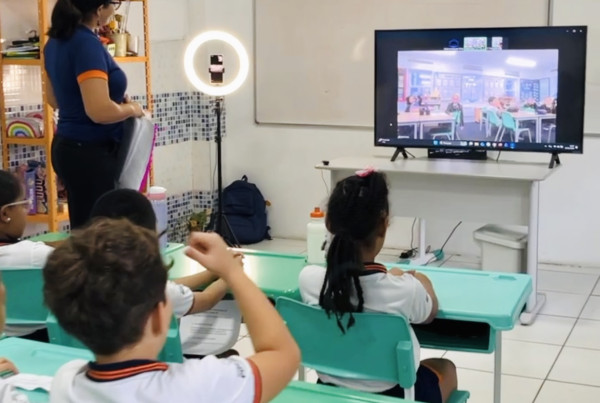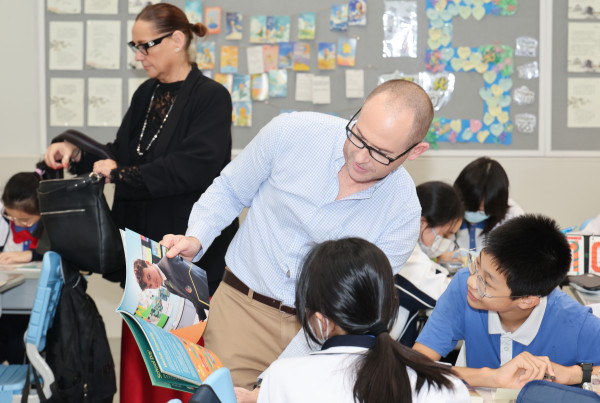The following article comes from Daniel Bull, Head of History at a secondary school in the United Kingdom.
The blissful days of summer holidays are drawing to a close, and as a dedicated educator, it’s time to gear up for the exciting journey of returning to the classroom. The transition from leisurely relaxation to the demands of teaching might spark a mix of emotions, including anxiety and excitement. In this article, we will explore effective strategies to prepare for a seamless return to work after the summer break.
1. Reflect and Reset:
Before diving headfirst into lesson planning and classroom setups, take a moment to reflect on your previous year’s experiences. What worked well? What could be improved? Reflecting on these aspects can provide valuable insights that can help you make the upcoming academic year even better. I know they’re quite cliché but I love a good SWOT (Strengths, Weakness, Opportunities, Threats) analysis to really get me thinking about the previous year.
2. Gradual Re-entry:
Avoid the overwhelming shock of jumping back into work by gradually transitioning back to your teaching routine a week or two before school starts. This might involve waking up and sleeping at your usual work hours, engaging in professional development webinars, reading education blog, or reviewing your curriculum. I often find it helps to plan a few lessons to brush the cobwebs off and get my mind moving again.
Avoid the overwhelming shock of jumping back into work by gradually transitioning back to your teaching routine a week or two before school starts.
3. Organise Your Space:
A well-organised workspace can significantly impact your efficiency and mindset. Clear out clutter, organise your teaching materials, and create a welcoming environment that fosters learning. Research from the Harvard Business Review suggests that an organised workspace can lead to increased productivity and reduced stress and we all know how stressful teaching is as it is!
4. Embrace Self-Care:
Teaching is a demanding profession that requires a lot of energy. Prioritise self-care activities that recharge your batteries, such as exercise, meditation, reading, or spending quality time with loved ones. A study published in the journal “Teaching and Teacher Education” emphasises the importance of self-care in preventing burnout amongst teachers – remember you’re human and need to rest too!
5. Set Realistic Goals:
While it’s natural to want to hit the ground running, setting unrealistic expectations can lead to unnecessary stress. Establish achievable goals for the first few weeks, ensuring that you have a solid foundation to build upon. Research conducted by Locke and Latham (2002) highlights the effectiveness of setting specific and challenging goals.

I always make sure I use SMART targets. If you aren’t familiar with SMART targets, the way it works is:
Imagine you want to plan something special for your students. A SMART target is a clever way to plan your idea to make sure it works out well.
“S” stands for Specific. This means your plan should be clear and focused. Instead of saying “I want to do something fun,” you would say “I want to organise a science experiment where students create volcanoes that erupt with baking soda and vinegar.”
“M” is for Measurable. This is about being able to track your progress. You could measure how many students participate, how well they understand the experiment, or how excited they are by looking at uptake.
“A” stands for Achievable. It’s important that your plan is realistic. For example, if you want to do a big project, make sure you have enough time, resources, and support to make it happen.
“R” is for Relevant. This means your plan should fit in with your goals and the needs of your students. If your goal is to make science more interesting, your experiment idea would be relevant.
“T” stands for Time. This involves setting a timeline for your plan. You decide when you’ll start preparing, when the experiment will happen, and when you’ll assess the students’ understanding.
So, a SMART target is like a tool that helps you plan your teaching ideas effectively. It ensures your plan is clear, measurable, doable, relevant to your goals, and has a timeline. This way, you can make the most of your teaching efforts and create meaningful experiences for your students.
6. Collaborate and Seek Support:
Connect with colleagues to share ideas, resources, and strategies. Collaboration can ease the transition and provide fresh perspectives. Additionally, seeking support from mentors, leadership, and counsellor services can be beneficial in addressing any anxieties you may have about returning to work.
7. Focus on Positive Relationships:
Build and maintain positive relationships with your students. Research from the Journal of Positive Psychology reveals that positive teacher-student relationships can enhance students’ academic success, motivation, and overall well-being. This can create a more enjoyable and fulfilling teaching experience.
Returning to work after the summer holidays as a teacher might seem like a daunting task, but with careful planning and a positive mindset, it can be a smooth and fulfilling transition. Reflect on past experiences, gradually ease back into your routine, prioritise self-care, set achievable SMART goals, collaborate with colleagues, and focus on building positive relationships with your students. By implementing these strategies, you can relax anxieties, hit the ground running, and embark on another successful academic year.
Returning to work after the summer holidays as a teacher might seem like a daunting task, but with careful planning and a positive mindset, it can be a smooth and fulfilling transition.
Remember, teaching is a noble profession, and your dedication plays a crucial role in shaping the future of your students. Welcome back to the classroom!
Author
Daniel Bull BA, PGCE, MA, MCCT, MSET.
Daniel Bull BA PGCE MA MCCT is a Head of History at a secondary school in the United Kingdom.
Originally from Southampton, Daniel graduated with a degree in History from the University of Southampton, he went on to study a PGCE at the University of Chichester, before studying MA Education at the University of Portsmouth.
Daniel is passionate about improving the life chances of young people and supporting teachers to develop their research-informed classroom practice.
Twitter: @historyguy7292




